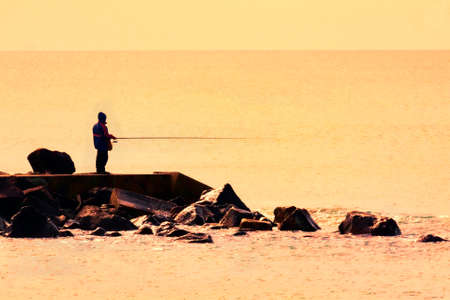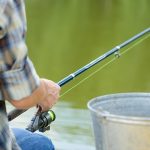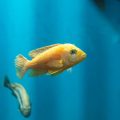1. Introduction to GPS and Mapping for Walleye Fishing
Walleye fishing has come a long way from the days of paper maps and guessing where the fish might be biting. Thanks to GPS and digital mapping tools, today’s anglers can pinpoint the best walleye spots with incredible accuracy. If you’re aiming to land more trophy walleyes or just want to spend less time searching and more time catching, understanding how these technologies work is a real game-changer.
Why GPS and Digital Mapping Are Essential for Modern Anglers
Modern GPS units are packed with features like high-definition lake contours, customizable waypoints, and real-time location tracking. Combined with mapping software, these tools let you do things that were nearly impossible before:
- Marking productive spots: Drop a pin on your favorite walleye hole and never lose track of it again.
- Tracking underwater structures: Easily locate drop-offs, weed beds, or rock piles where walleyes love to hang out.
- Following depth contours: Stay in the “walleye zone” by navigating along precise depth lines.
- Sharing info with friends: Share waypoints and routes with your fishing buddies for better teamwork on the water.
Old-School vs. High-Tech: A Quick Comparison
| Feature | Old-School Methods | GPS & Digital Mapping |
|---|---|---|
| Finding Hotspots | Guesswork, memory, paper maps | Pinpoint accuracy, saved locations |
| Navigating at Night or in Fog | Difficult and risky | Safe, easy route tracking |
| Tracking Fish Movement | Hard to remember patterns | Easily log and analyze trips over time |
| Sharing Spots with Friends | Telling stories (maybe with some exaggeration!) | Share exact waypoints digitally |
The Bottom Line: Tech Makes Walleye Fishing Smarter and Easier
If you’re serious about upping your walleye game, learning how to use GPS and mapping tools is a must. These devices take the guesswork out of locating fish and let you focus on what really matters—catching more walleyes!
2. Selecting the Right GPS and Mapping Tools
Choosing the Best Tools for Walleye Fishing
When it comes to targeting walleye, having the right GPS and mapping tools can make a huge difference. In the U.S., anglers rely on a mix of handheld GPS units, fish finder combos, and mobile apps to help pinpoint productive spots. Here’s a simple guide to the most popular options and what features you should look for when hunting walleye.
Top GPS Units and Mapping Apps Used by American Anglers
| Device/App | Main Features | Why It’s Good for Walleye |
|---|---|---|
| Garmin ECHOMAP Series | High-precision GPS, detailed lake maps, sonar integration | Helps you mark structure, drop-offs, and weed lines where walleye hide |
| Humminbird HELIX Series | LakeMaster maps, side imaging, AutoChart Live mapping | Custom mapping helps spot underwater points and humps preferred by walleye |
| Lowrance HDS LIVE | C-MAP charts, touchscreen interface, advanced sonar | Easy navigation and real-time fish finding in bigger lakes or rivers |
| Navionics App (Mobile) | Detailed contour maps, community edits, mobile-friendly | Perfect for on-the-go scouting and marking hot spots from your phone |
| Fishbrain App (Mobile) | User-reported catches, map overlays, social features | See recent walleye catches nearby; learn from other anglers’ experiences |
What Features Should You Look For?
- Detailed Contour Maps: Look for units with high-definition lake or river charts. Walleye love sharp drop-offs and submerged structure.
- Sonar/Down Imaging: Integrated sonar helps you see baitfish schools, bottom composition, and even fish arches.
- Waypoints & Marking: Make sure your device lets you easily save favorite locations like reefs or rocky points.
- User Community Data: Apps that show recent catches or user tips can point you to proven walleye areas.
- Portability: Handheld devices or smartphone apps are great if you hop between shore spots or different boats.
- Weather & Depth Info: Many top tools give real-time weather updates and water depth readings—both matter when chasing active walleye.
Tip:
If you’re new to electronics, start with an app like Navionics for basic scouting. As you get more serious about walleye fishing, investing in a combo unit (like Garmin or Humminbird) will pay off with better mapping and fish-finding power.
![]()
3. Understanding Walleye Habitats Using Maps
When it comes to landing more walleye, knowing how to read maps and use GPS is a total game-changer. Modern anglers aren’t just casting blind—they’re using technology and map-reading skills to pinpoint where big walleye like to hang out. Here’s how you can make the most of topographical lake maps and digital mapping tools.
Reading Topographical Lake Maps
Topographical lake maps are loaded with info that can help you zero in on prime walleye locations. These maps show the underwater landscape, letting you see things like drop-offs, flats, points, and humps—classic walleye hotspots. The key is learning how to read contour lines:
| Contour Line Spacing | What It Means | Walleye Potential |
|---|---|---|
| Lines Close Together | Steep drop-off or ledge | High—walleyes love edges for ambush |
| Lines Far Apart | Gradual slope or flat area | Medium—good during low-light hours or at night |
| Circular Lines (Humps) | Underwater hills or islands | Excellent—walleyes often school here, especially in summer |
| Irregular Bends or Points | Protruding underwater features | Great—act as travel routes for feeding fish |
Using GPS and Mapping Tools On the Water
With a GPS unit or a smartphone app, you can mark waypoints and track your boat’s position in real time. This lets you return to productive spots again and again. Many American anglers use mapping chips or apps like Navionics, Humminbird LakeMaster, or Fishbrain to access detailed contour maps and live updates on water conditions.
How To Spot Hidden Structures Walleyes Love
- Sunken Roads or Old Creek Beds: Look for narrow, winding depressions on the map—these act as walleye highways.
- Rock Piles or Submerged Timber: Marked as small dots or irregular shapes; walleyes hide here for cover and food.
- Saddle Areas: Connects two humps with a shallow dip between them—a classic ambush zone.
- Main-Lake Points: Long stretches jutting into deeper water; great for trolling or casting along the edge.
Pro Tip: Use Map Layers for More Insight
If your app allows it, switch between satellite imagery and contour layers. Satellite view helps spot weed beds, docks, and shorelines, while contour layers reveal depth changes and hidden structures below the surface.
4. Marking and Saving Waypoints
Why Marking Waypoints Matters for Walleye Fishing
When you’re out on the water searching for walleye, it’s easy to forget exactly where you landed those big catches or spotted a productive structure. That’s where GPS and mapping tools come in handy. By marking waypoints, you create a digital map of your favorite fishing spots, underwater features, and seasonal patterns. This not only saves time but also helps you become a more consistent angler.
Tips for Marking Productive Spots
- Be Specific: When you catch a walleye or see good fish activity, drop a waypoint immediately. The more precise, the better—don’t just mark the general area.
- Label Clearly: Most GPS units let you name each waypoint. Use simple labels like “Spring Ledge,” “Deep Hump,” or “Evening Bite” so you can quickly recall why each spot was marked.
- Add Notes: Some devices allow additional notes. Include details like depth, lure used, water temp, and weather conditions.
Organizing Your Waypoints
| Category | Example Label | Suggested Icon/Color |
|---|---|---|
| Baitfish Areas | Bait Ball 1 | Blue Fish Icon |
| Structure (Ledges, Humps) | Main Lake Hump | Red Triangle |
| Seasonal Hotspots | Fall Drop-Off | Orange Star |
| Catches/Landing Spots | Big Walleye #1 | Green Flag |
| Danger Zones (Obstacles) | Shallow Rocks East | Yellow Warning Sign |
Pro Tip:
If your unit allows folders or groups, sort your waypoints by season or location (e.g., “Spring Patterns,” “Summer Deep Points”). This makes it easier to plan trips and find past success areas quickly.
Using Waypoints to Develop Seasonal Patterns
The real magic of saving waypoints comes over time. Review your saved spots at the start and end of each season. You’ll likely notice that certain areas produce under specific conditions—like spring spawning flats or fall points near deep water. Use this info to build a seasonal pattern log so you know where to start each trip based on the time of year and conditions.
Sample Seasonal Pattern Log Table:
| Season | Main Locations Used (Waypoints) | Bite Window/Notes |
|---|---|---|
| Spring (Apr-May) | “Warm Cove,” “North Flat” | Mornings, shallow crankbaits work best after sunrise. |
| Summer (Jun-Aug) | “Deep Hump,” “Channel Edge” | Lunchtime bite on crawler harnesses near thermocline. |
| Fall (Sep-Nov) | “Rocky Point,” “Drop-Off #2” | Dusk bite on jigs as water cools down. |
This simple approach turns your GPS into a powerful fishing journal, helping you dial in the walleye bite year after year.
5. Leveraging Real-Time Data and Community Shared Hotspots
Make Your GPS Work Smarter, Not Harder
When it comes to finding the best walleye fishing spots, simply having a GPS isn’t enough anymore. Modern anglers are using real-time data and community-driven tools to give themselves an edge. Let’s break down how you can use these resources to locate those prime walleye locations.
Using Real-Time Data for Better Fishing
Many mapping apps and fish finders now let you overlay live information right onto your maps. This means you can track changes as they happen, helping you make smart decisions on the water.
| Real-Time Data Type | How It Helps Walleye Anglers |
|---|---|
| Water Temperature | Walleye are sensitive to temperature changes. Knowing the current water temps helps you target areas where they’re most active. |
| Weather Overlays | See wind direction, fronts, or approaching storms in real-time. Adjust your location or tactics before conditions change. |
| Lake Level Updates | Some lakes have fluctuating water levels that affect fish location. Live updates help you avoid dry spots or find new structure. |
Tapping Into the Angler Community: Shared Hotspots
You’re not alone out there! Many fishing apps and forums allow users to mark and share their favorite hotspots. These “community shared” waypoints can save hours of trial and error, especially if you’re new to a lake or river.
- Mapping Apps: Platforms like Fishbrain or Navionics let anglers upload catches and mark productive zones, which others can view (depending on privacy settings).
- Online Forums: Sites like Lake-Link or local Facebook fishing groups often have up-to-date reports on where the bite is hot.
- Tournament Results: Some events post catch locations after they wrap up—giving you insider info on proven walleye waters.
Pro Tip: Use But Don’t Abuse!
If you benefit from community-shared info, consider giving back by posting your own catches or observations. It keeps the spirit of sharing alive and helps everyone enjoy more success on the water.
6. Best Practices for On-the-Water Navigation and Safety
Staying Safe While Using GPS on U.S. Lakes and Rivers
When youre chasing walleye across America’s big lakes and winding rivers, a GPS unit or mapping app can be your best friend. But even the most high-tech tools need to be used wisely to keep you and your crew safe—and on the right side of the law.
Top GPS Navigation Safety Tips
| Tip | Why It Matters |
|---|---|
| Double-check waypoints before moving | Prevents accidental navigation into shallow water or restricted areas |
| Download maps for offline use | No cell service? Offline maps keep you from getting lost if your signal drops |
| Keep an eye on battery life | A dead GPS leaves you without directions—always carry backup batteries or a power bank |
| Know local boating laws | Laws about speed zones, no-wake areas, and access vary by state—check them before launching |
| Mark hazards on your map | Tagging rocks, sandbars, or stumps helps avoid accidents later in the day—or on future trips |
| Share your float plan | Telling someone where you’ll be fishing can be a lifesaver in emergencies |
| Update software regularly | Latest updates fix bugs and add new safety features to your device or app |
| Use marine-rated equipment | Water-resistant and rugged gear stands up better to spray, rain, and bumps in the boat |
Navigating Legally: Key Points to Remember
- No trespassing: Respect private property lines shown on detailed maps—don’t cross onto posted land.
- Observe fishing regulations: Some spots are off-limits during spawning season; check your state’s rules before heading out.
- PFDs required: U.S. Coast Guard requires one approved life jacket per person. Many states require kids to wear them at all times.
- No alcohol while operating: Boating under the influence is illegal everywhere in the U.S.—and just as dangerous as drinking and driving.
- Respect speed/no-wake zones: These are marked for safety near docks, marinas, and wildlife habitats; your GPS may show these zones.
Troubleshooting Common GPS Issues on the Water
| Issue | Quick Fixes |
|---|---|
| Poor satellite signal/accuracy drops | Move away from cliffs or dense tree cover; ensure device has clear sky view; restart if needed. |
| No map data showing up offline | Pre-load charts/maps at home with Wi-Fi; check storage space on device. |
| Batteries draining fast in cold weather | Keep devices warm in your pocket or a dry bag when not in use; use fresh batteries for each trip. |
| Certain areas missing details (hazards, ramps) | Add custom waypoints as you find hazards; update maps regularly for latest info. |
| Error messages or frozen screen mid-trip | Restart device; have paper backup maps as a last resort; contact support if it repeats. |
Using GPS and mapping tools makes finding prime walleye spots easier and safer—but only if you follow basic best practices. Know your equipment, respect local laws, and always put safety first so every trip is a good one.


